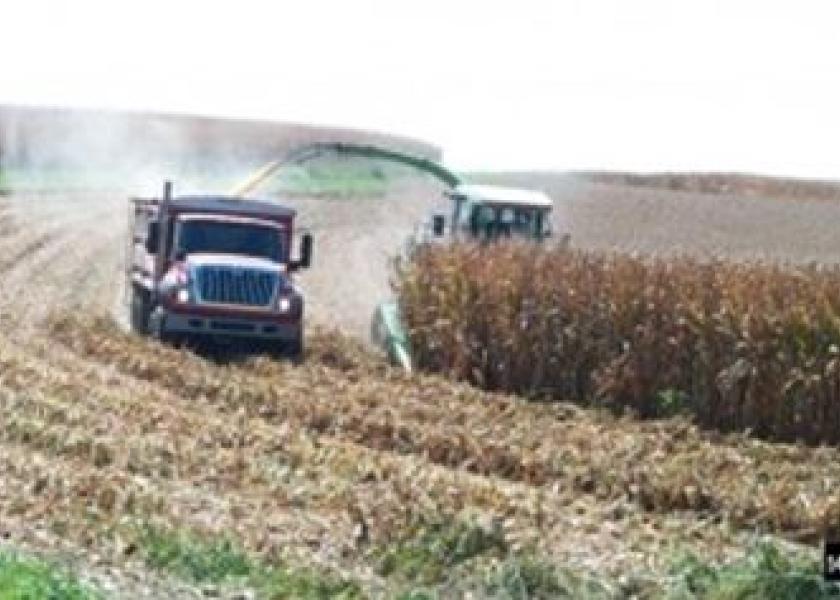Pros and Cons of Harvesting Snaplage

Interest in harvesting snaplage has increased the last few years, as an option to partially replace purchased corn in the ration. As with all feed decisions, snaplage has both positive and negative characteristics that will be more significant on some farms than others. While snaplage can offer major feed-cost savings to some farmers, it is not for everyone.
Snaplage basics
Snaplage is corn silage harvested with equipment that excludes the stalk and most of the leaf material but is generally understood to include the whole ear (husk, cob, grain, part of the shank). It is harvested by a silage harvester with a snapper head and kernel processor and ensiled at 35-40% moisture. Most major manufacturers of silage choppers also make snapper heads. Compatible aftermarket snapper head can also be purchased, especially in the case of self-propelled harvesters.
Earlage is similar to snaplage but does not include the husk and very little of the shank is retained. In addition to using various types of snapper heads, some farmers have also harvested earlage by adjusting their combines to break up the cob and return it and the grain to the bin. Farmers choose to harvest both earlage and snaplage instead of whole-plant corn silage for very similar reasons. While these products are similar in many ways, the feeding characteristics will be different, depending on how much of the husk, shank and stalk are excluded during harvest.
The pros of harvesting and feeding snaplage:
- The feed characteristics are likely to improve animal health compared to corn grain
- Reduced transportation costs per ton of TDN harvested compared with corn silage
- Increased flexibility of the time of harvest compared with corn silage
- Returning stalks and leaves to the soil can improve soil quality and reduce the risk of soil erosion
- Less fuel is used per ton of TDN harvested compared with corn silage
- Improved ruminal digestibility compared to dry corn
- Starch digestibility increases with time in storage compared with corn grain
- It can allow less reliance on purchased corn
- Requirements for harvest equipment and storage facilities are similar to whole-plant corn silage
- Low-quality leaves and stalks can be replaced in the ration with higher quality forages
- 10-15% higher TDN yield per acre than shelled corn
The cons of harvesting and feeding snaplage:
- Less consistent quality characteristics compared with dry grain
- If harvested too late, cob digestibility is significantly reduced
- A snapper head is needed
- Returning the unharvested portion of the plants may offer more residue management challenges than regular silage stubble
- Fermentation losses can be high if a good silage making protocol is not used
- The tendency for the starch digestibility to increase requires extra diligence when balancing the ration over the time the ration is being fed out
- The amount of non-grain plant material present can vary with harvest moisture, even within the same day
- Chop length can be more difficult to control than with whole-plant corn silage
- More tons of forage need to be harvested or purchased and stored to replace the value of unharvested portions of the corn plants
- Not as easily marketed as dry grain
- Lower in protein than corn grain by about 1%
Snaplage is haunted by a bad reputation associated with excessively late harvests, poorly adjusted equipment and poor silage-making practices. To end up with high-quality snaplage going into the mouths of your cows, several practices must be followed:
- Harvest between 35% and 40% moisture (for the harvested portion). At this point, the corn should be physiologically mature, and the digestibility of the cob should be high. Research has shown that the digestibility of the cob declines significantly, as it dries out. It is better to err on the side of harvesting it wetter than drier. If harvested excessively dry, molds and associated mycotoxins can develop.
- When deciding how to store the snaplage, consider whether your current facilities will allow the product to be fed out rapidly enough to prevent spoilage. The density of snaplage in the silo should be at least 30 pounds of dry matter per cubic foot to provide a good environment for fermentation.
- Maximize kernel damage by using the shortest chopping length possible, using fine-toothed rollers adjusted to 2-3mm. The differential can and should be set higher with snaplage than with silage.
- If possible, allow at least 60 days to pass before opening the silo to benefit from the increase in starch digestibility over time.
Snaplage is an excellent source of energy for dairy livestock. While many farmers in recent years have begun to harvest snaplage to partially offset the cost of purchased grain, the associated land and management requirements are significant and need to be considered carefully before major changes are made.
Image courtesy of Randy Shaver, University of Wisconsin
To read more articles like this one:
Dairy Herd Management
Tips for Good Corn Snaplage
Determine Silage Inoculant Based on Dry Matter and Crop
Silage Earlage Decision Aid
Drovers
Planning Can Minimize Winter Feed Costs
Using Silage, Earlage and HMC in Finishing Cattle
Consider all Your Corn Silage Harvesting Options
Sponsored by Lallemand Animal Nutrition







